Earthquakes are common phenomena on our planet. Scientists register dozens of them daily. From time to time they reach considerable strength and cause destruction. However, most regions of Ukraine are really not threatened.
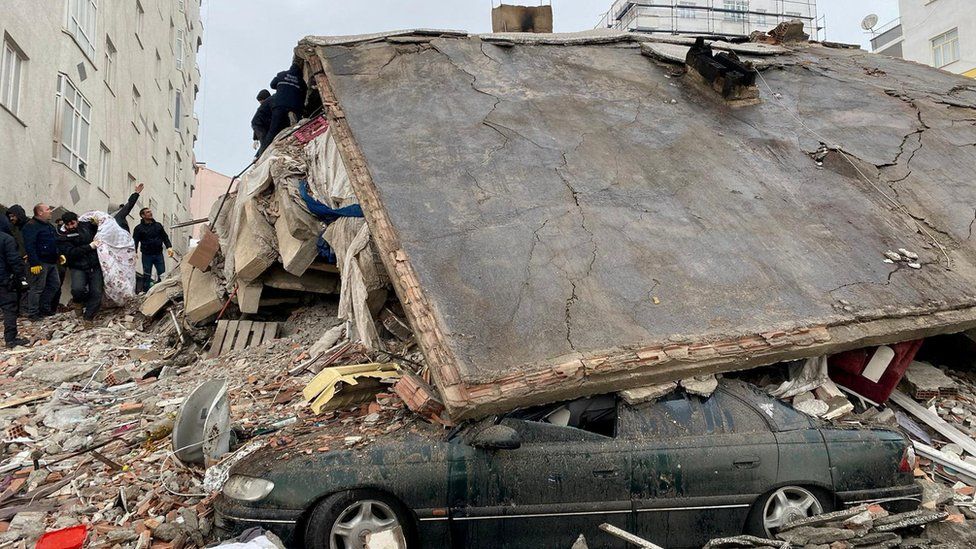
What causes earthquakes
A series of earthquakes that occurred in Turkey and Syria on February 6-7, 2023 scared a lot of people around the world and in Ukraine in particular. Many start panicking that currently we have some exceptional phenomenon threatening to destroy humanity.
But that is not the case. Earthquakes are short-term phenomena of vertical and horizontal cyclic movement of the Earth’s surface. Every day, scientists record dozens of them all over the world. At the same time, no one but scientists is aware of the absolute majority of these events. They are much too weak.
Earthquake in Japan in 2011
That is why we are so frightened by large earthquakes, which lead to the destruction of cities and the death of people. Although scientists often warn about them in advance, for the residents of the affected areas they still turn out to be catastrophic. The same applies to the earthquakes in Turkey on February 6-7.
The cause of the vast majority of earthquakes is the tectonic movement of plates. A much smaller number of them are associated with “hot spots” in the Earth’s lithosphere. And absolute minority are due to karst phenomena associated with natural processes and human activities.
Plate tectonics
One of the principle properties of the Earth is its geological structure. There is an extremely hot, dense, but at the same time solid inner core in the center of our planet. Next come the hot, but liquid outer core and mantle. And on the surface of the latter a hard, cold and relatively light crust floats, on which we actually live.
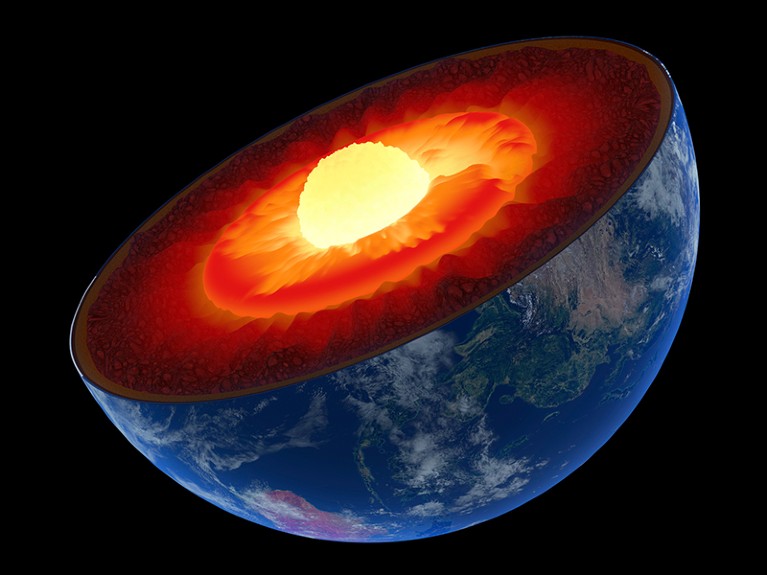
The inner structure of the Earth. Source: Nature
Scientists have not yet investigated absolutely all processes that take place in the mantle. However, in general, there is nothing mystical in the picture of what is happening in the bowels of our planet. The heated substance from the depths takes the form of streams and goes up to the surface. There, these jets partially melt, and partially split the light bark, breaking it into separate fragments.
We call them tectonic plates. They are usually very large. Even the smallest one is quite comparable to the regions of Ukraine, and the largest one — the Pacific tectonic plate — exceeds even Russia in size.
Tectonic plates are not at rest. They are pushed in different directions by hot flows of magma from below. As a result they begin to move: some are coming apart; others sink one under another; still others collide so that their edges rise up.
All this happens extremely slowly — at a speed of several centimeters per year. But the mass moving is extremely large, so the energy involved is compared to that of nuclear weapon. We usually feel it as an earthquake.

Why is Turkey often shaken?
If you look at the history of Turkey, it has suffered 11 major earthquakes as recently as last 20 years. This country is tectonically unstable together with the entire Mediterranean region. Two giant tectonic plates — Eurasian and African — have been ramming here for many millions of years.
The Pyrenees, the Alps, the Himalayas, the Carpathians, and the Caucasus are uplifts that were formed as a result of those collisions. Moreover, it is due to this process that the Europe itself rose from the sea approximately 100 million years ago.
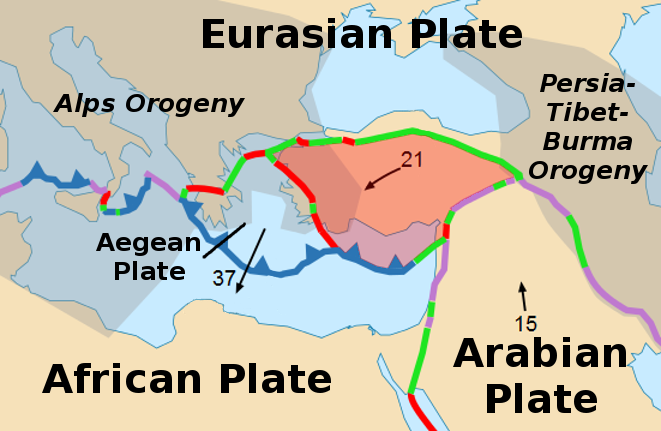
The energy of the collisions was so great that giant pieces broke off from the edges of the platforms, which became microplates. One of them — Anatolia is located directly under the territory of Turkey. On one side of it is a very small Aegean plate, and on the other — the Arabian, also a small one. All these plates are pushing against each other, so earthquakes in these places are not uncommon.
Why earthquakes are rare in Ukraine
Although Ukraine is very close to Turkey, we do not anticipate devastating earthquakes here. They are observed not only directly on the line of collision of lithospheric plates, but also at some distance from them. But still, the tectonic platform is not a solid saucepan cover, and the vibrations in it subside quite quickly.
The entire territory of our country is located on the Eurasian tectonic plate, and quite far from its edge. The only exceptions are the Carpathians, the Crimea, and the south of Odessa region. The crust beneath them is still noticeably deformed, and theoretically an earthquake can occur there, comparable in strength to the Turkish one, but it can happen once every several hundred or even thousands of years. It is almost two centuries since buildings were destroyed by an earthquake in Odessa last time. But even then they were some wretched hovels.
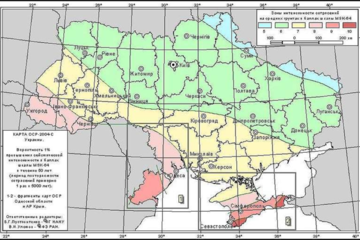
However, this does not mean that the rest of Ukrainian territory is never shaken by earthquakes. When strong earthquakes occur in the Black Sea region or in the Carpathians, shocks spread throughout the country and people can feel them. But you shouldn’t be afraid of them.
Hot spots and karst phenomena
There are two exceptions to the rule “earthquakes occur where tectonic plates collide”. The first is hot spots and karst phenomena. The former represent a situation when a heated flow of magma melts the crust at some spot far away from tectonic faults. Then a volcano forms at this point. And since the gases in the magma press on the surrounding rocks, this process is accompanied by earthquakes.
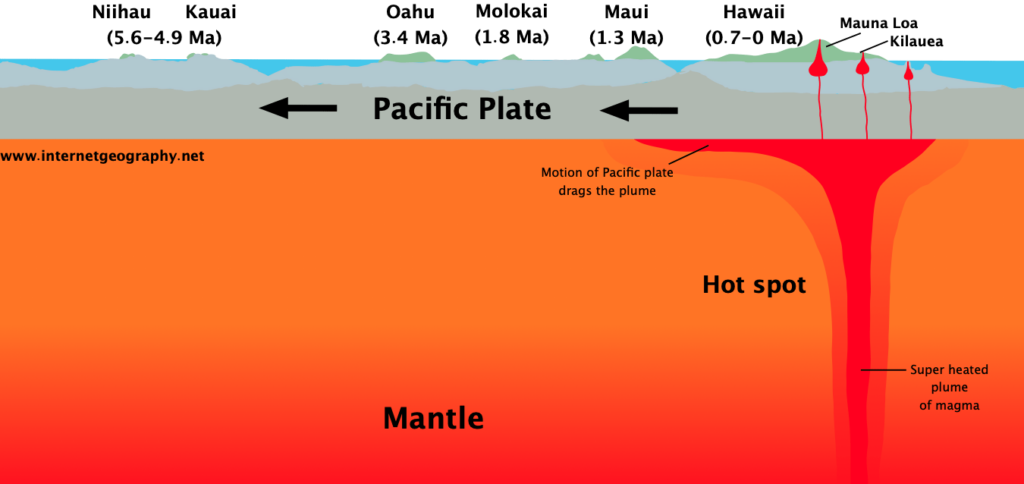
A hot spot cannot appear instantly — this process takes thousands or millions of years. In addition, they almost always are formed under the oceans, where the crust is not as thick as under the continents. A typical example here is the Hawaiian Islands.
Meanwhile the karst phenomena and related earthquakes can be observed in Ukraine. They happen due to underground water flows and the cavities produced by them. These voids can get enormous in size and sooner or later they begin to collapse.
On the surface, this process can be felt like an earthquake. At the same time it is not too catastrophic. The only danger is the formation of a dip in the surface, capable of destroy several buildings at once. That is why it is so important to assess the threat of a karst formation timely and resettle people from there.
